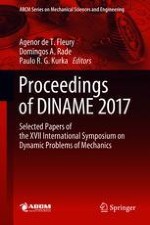This book presents the most significant contributions to the DINAME 2017 conference, covering a range of dynamic problems to provide insights into recent trends and advances in a broad variety of fields seldom found in other proceedings volumes.
DINAME has been held every two years since 1986 and is internationally recognized as a central forum for discussing scientific achievements related to dynamic problems in mechanics. Unlike many other conferences, it employs a single-session format for the oral presentations of all papers, which limits the number of accepted papers to roughly 100 and makes the evaluation process extremely rigorous.
The papers gathered here will be of interest to all researchers, graduate students and engineering professionals working in the fields of mechanical and mechatronics engineering and related areas around the globe.
